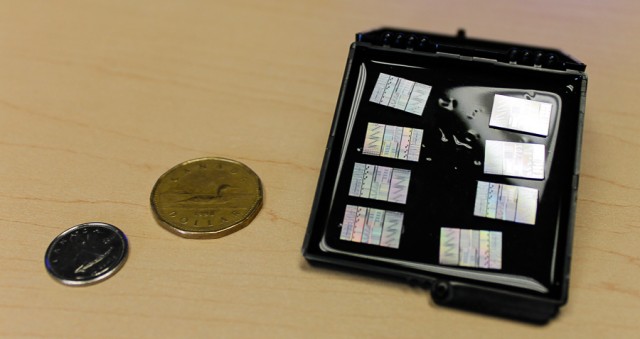The internet has integrated itself into almost every aspect of our lives. Every year the global demand for capacity of the internet doubles. And there is no sign of it slowing. This leaves engineers with the pressing problem of how to develop the technology to meet these demands.
The internet is a global network of interconnected computers that carries a huge amount of data to and from users all around the world. At the very core of these computers are transistors – the basic building blocks for modern electronics. Transistors control the movement of electricity, enabling switching or amplification of an electronic signal. Today’s transistors are made of silicon and are packed onto a set of electronic circuits making up the chips that are built into devices like smartphone and laptops.
As technology has progressed, transistors have gotten smaller and smaller. This trend was predicted by Intel co-founder Gordon Moore in the 1960s, who projected that the size of transistors would shrink in half approximately every two years. As transistors became smaller, more of them got packed onto chips. But due to the limits in miniaturization, engineers had to look to other avenues to meet the growing demands for the internet.
Scientists and engineers came up with a potential solution: silicon photonics. The basic idea behind silicon photonics is connecting modern electronics with speed-of-light capabilities. The Daily spoke with David Plant – a researcher in the Photonics Systems Group at McGill – and his lab about their dedication to the study of this fast-developing technology.
The term ‘silicon photonics’ was first coined in a 1984 paper by Joseph Goodman, a researcher at Stanford University. Silicon photonics is the concept allowing silica to use light. Silicon is the material most commonly found in today’s electronics. Photons – the particles that make up light – travel at rates much faster than electricity. “Instead of an electron moving down a wire, it’s a photon moving along a waveguide,” explained Plant. This new platform for technology provides enormous implications for the future: devices run with this light-speed technology would see increased performance and decreased power consumption – two major issues we are faced with today.

“The modern issue is to move onto the next solution, where the dream is to replace electricity with light,” described Imran Cheema, a postdoctoral fellow at the Plant lab, “We want to replace electricity with light because the speed of light is faster than the speed of electricity, and light can carry more information than electric current.”
The main problem this group is working to solve is how to integrate this new technology into the current system. Because the current infrastructure that is built for the transmission of electricity is so widespread, replacing it all would be much too great a challenge. Instead, the goal is to develop a compatible system that will pump light through existing devices.
As of now, they are looking into how to allow electrons and photons to co-exist. Developing a system where these two fundamental particles can interact and help improve the performance of devices across computing, communicating, and sensing systems.
“There is always a trade-off,” explained Alireza Samani, a master’s student in the lab. “When you want higher bandwidth, you need to have higher power consumption. What we are working on is trying to find a device that is efficient and [able to] hit that sweet point where you have good performance and good power consumption.” The internet’s energy consumption is 2 per cent and growing, making it important to develop new solutions.
The silicon photonic devices that are now beginning to emerge are moving the capacity of the internet upwards to meet the growing demands. According to Plant, “What’s driving this all is the internet, [and] there is strong positive feedback – which is very exciting. We are trying to solve problems that people really care about.”
“I’m from Pakistan. In the late 1990s, there were only a few homes with internet and computers,” Cheema told The Daily, “and now it’s pretty much in every home – even in small villages. My kids are accessing the internet at an age I didn’t even know internet existed. What they will have at my age, I can’t even imagine.”
Someday soon, we may have photonic laptops and smartphones that run on light instead of electricity. Only time will tell.
